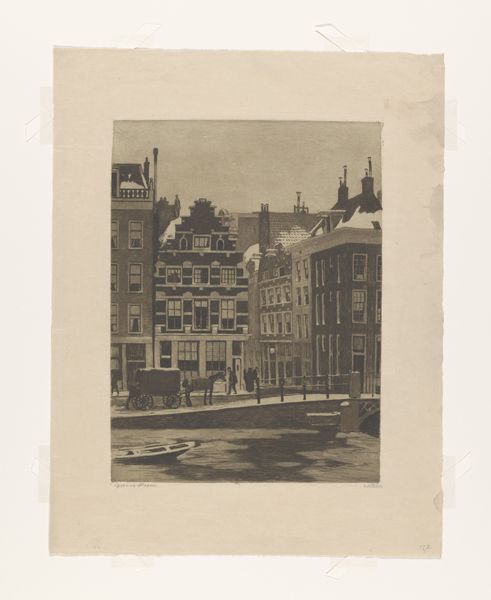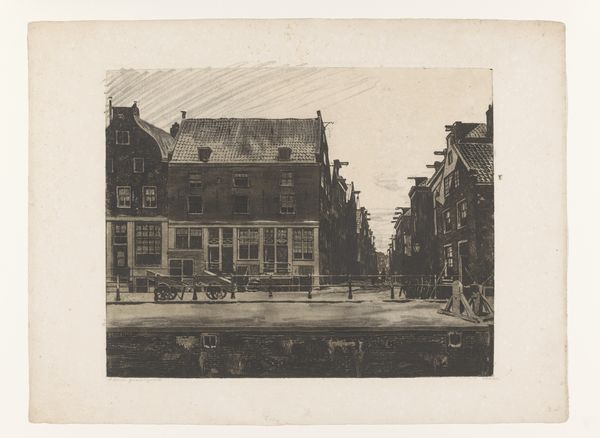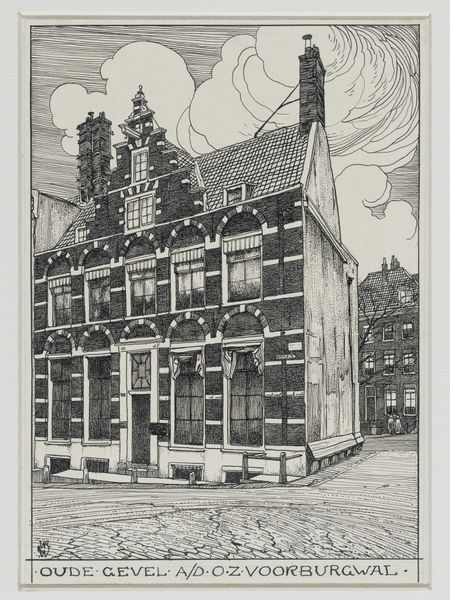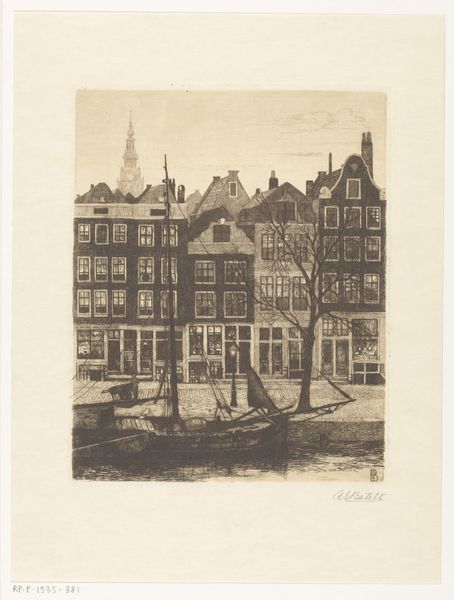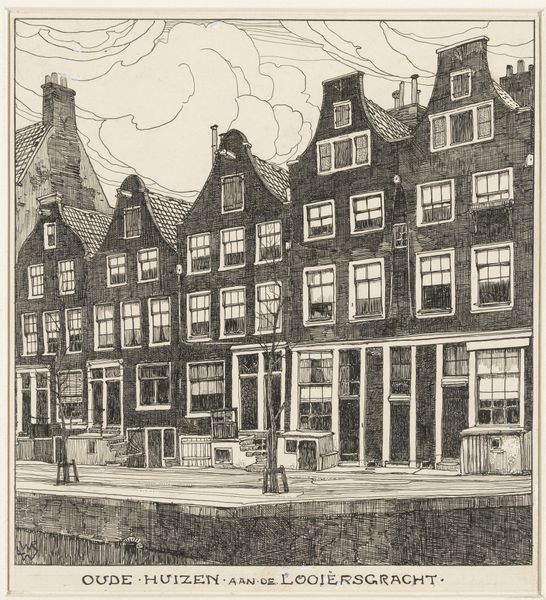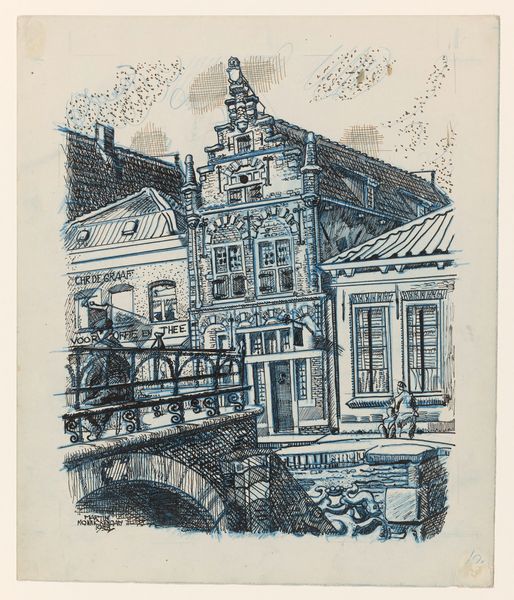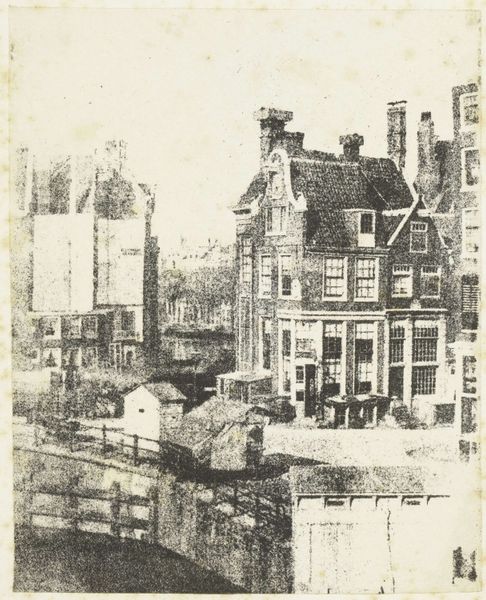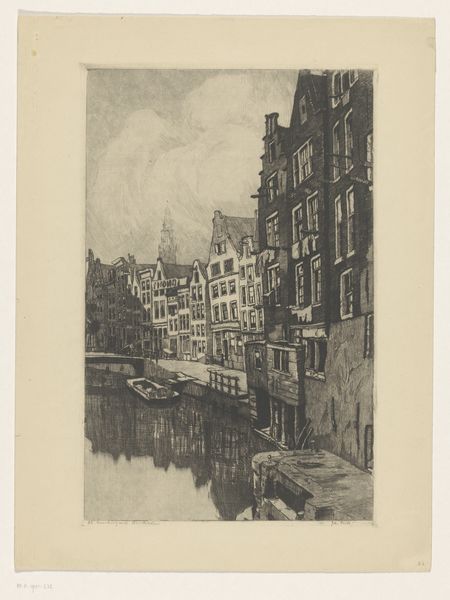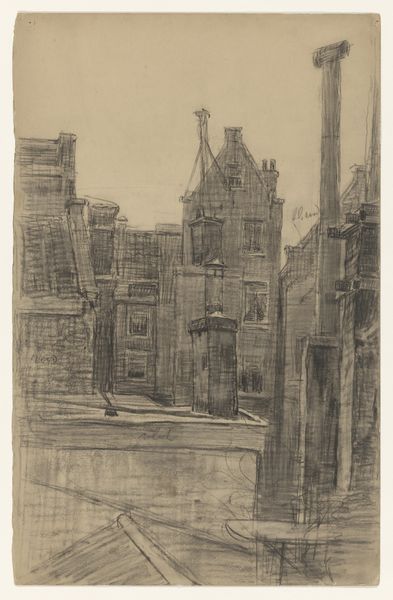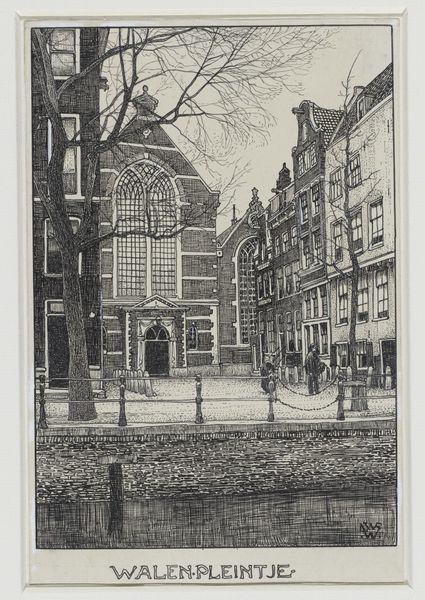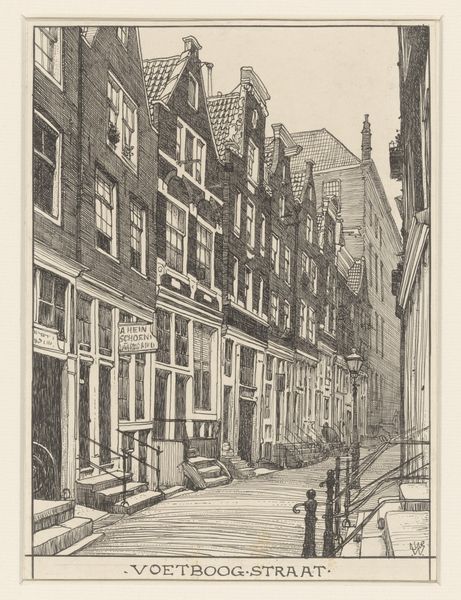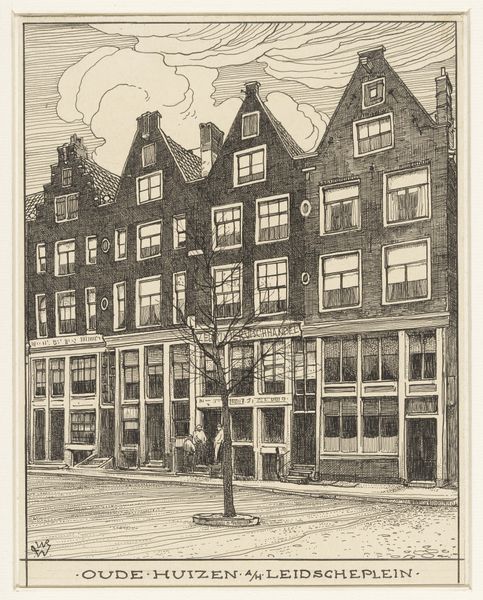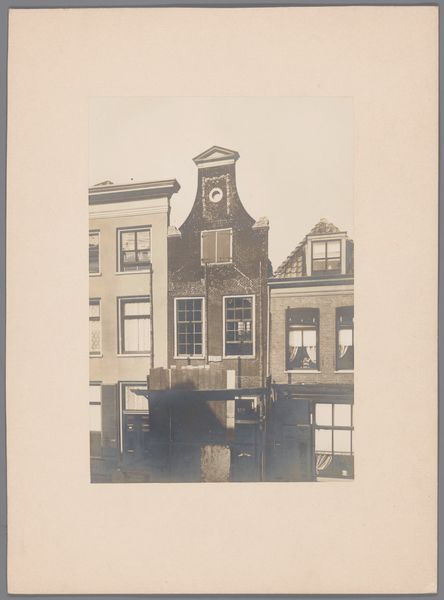
Dimensions: height 728 mm, width 440 mm
Copyright: Rijks Museum: Open Domain
Willem Witsen made this drawing of the Halvemaansteeg in Amsterdam, using graphite on paper, sometime in the late 19th or early 20th century. The subtle rendering of light and shadow in this urban scene connects it to a broader cultural interest in realism and the everyday experiences of modern life. The image is interesting for what it says, and what it leaves out. Witsen was part of a group known as the Amsterdam Impressionists. They were influenced by French painters like Monet and Degas, but they focused on specifically Dutch subjects. Witsen often depicted quiet, intimate scenes of Amsterdam. Here, the artist offers a vision of the city that is notably still and sparsely populated. The setting is urban but absent of almost any signs of commercial life. To understand this image better, we might look at the history of urban planning in Amsterdam. We might also research the social and political views of Witsen and his circle. How did the Amsterdam Impressionists see themselves in relation to the city’s institutions and inhabitants?
Comments
No comments
Be the first to comment and join the conversation on the ultimate creative platform.
